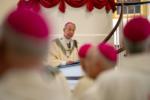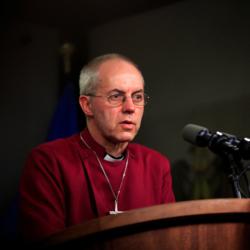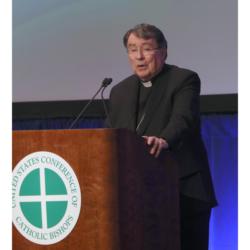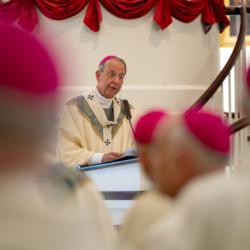Sisters of Notre Dame de Namur 175th anniversary: 'The Lake' land use changes but remains a haven for those in need
Celebrating 175 years of the Sisters of Notre Dame de Namur in New England: An enduring legacy of goodness
Sisters of Notre Dame de Namur in New England -- The early years
Sisters of Notre Dame de Namur 175th anniversary: Growth in Lowell and into Tyngsborough
Notre Dame Academy from Roxbury to Hingham
The Sisters of Notre Dame de Namur expand into the Merrimack Valley
Into the heart of the Commonwealth
More than a dream -- Notre Dame Cristo Rey High School
Sisters of Notre Dame de Namur 175th anniversary: Emmanuel College -- Mission made manifest
Sisters of Notre Dame de Namur 175th anniversary: Cuvilly Arts and Earth Center of Ipswich
"Thank you for your housewarming present of 50 hens and three cows" is no longer part of urban U.S. vernacular, but it was most appropriate in Worcester in 1900.
The previous five decades were busy for the Northeast congregation. Responding to diocesan and parish requests, the Sisters of Notre Dame de Namur founded and staffed many parish schools. Young women in the area felt God's call to the sisters. After years of actual and academic preparation, they became part of the growing Notre Dame community. Some of the parishes to which they were sent had substandard living accommodations and severely crowded classrooms. Rest and rejuvenation were not part of the sisters' lifestyle. As a result, some Sisters' health could not keep up with the pace, and they needed the prevalent medical solution -- relaxation in the country. And so, using a straw buyer to circumvent the anti-Catholic sentiment of the times, the Sisters of Notre Dame de Namur purchased 145 acres of farmland in 1900 for $18,000.
The sisters had become farm owners the way they made other decisions. They prayed earnestly to the Good God and asked for guidance, assessed the ministry need, thought creatively for a solution, decided on a course of action, and went ahead. And, in April 1900, about a half dozen sisters moved into the former Swan Farm on Plantation Street in Worcester. Their property stretched down to Lake Quinsigamond. Since area roads had not yet been paved, barges on the Lake helped transport sisters, building equipment and farming supplies. Even now, the sisters refer to the property as "The Lake."
We are fortunate to have first-hand information on the sisters' activities, primarily due to written accounts of life in the U.S. After establishing the congregation in 1804, Sisters of Notre Dame de Namur foundresses St. Julie Billiart and Francoise Blin de Bourdon kept in frequent written contact with each other and their sisters in France and Belgium. This tradition carried to the U.S., and each community wrote its Annals, a hand-written account of daily activities. The Annals proved to be a treasure trove of primary source information on Notre Dame's life decades ago.
From detailed accounts, the sisters focused wholeheartedly on their mission to provide temporary or permanent loving accommodations for ailing members. Building permits, as we know them, did not exist. And the nearest neighbors, residents of the city Poor Farm, would not complain if they heard any unusual noise coming from the sisters' farm. So, the sisters replaced the ramshackle structures with more appropriate ones. Every aspect of early life at the Lake needed attention. Spiritually, the sisters didn't have a chapel until 1904, so they took turns at 5 a.m., riding the uncovered wagon to the Ascension Community, three miles away on Vernon Hill, for Mass and meditation time. Rarely did the New England winter triumph over their religious devotion.
With the help of the three hired hands, farming produced bounteous vegetables and fruits. These were freely given to benefactors and other Notre Dame communities since the Superior said she was unfamiliar with local tax laws and didn't want to run afoul of them if she charged money. In return, Notre Dame and its benefactors provided the sisters everything from a buggy top to furniture and fabrics. The sisters exuberantly embraced every aspect of their farm life. They named the cows, sheep, ducks, and pigs, and they rejoiced in the new 60-foot chicken coop. They helped carry water from the Lake during drought before a 1917 improvement brought running water.
In 1904, just four years after opening, the facility was awarded credentialed care for the sick. By 1910, 60 sisters became temporary residents. Many of them returned to their communities, but a number died at the Lake. The private cemetery at the back of the property is now the final resting place for more than 500 sisters. The spacious grounds also welcomed vast numbers of visitors: 300 members of the Married Ladies Sodality of a neighboring parish; later, 300 members of the Unmarried Ladies Sodality from the same parish, a couple of hundred children from a nearby school, 142 sisters at a time for their annual week-long retreat, another 142 sisters later in the summer for a retreat. The logistics push our imaginations.
Prayerful consideration accompanied each expansion. Some of these buildings required significant construction, while others needed renovation. Some projects included a two-story bunkhouse for the hired men, paved roadways, bigger barns, a new chapel, and better housing for the sisters. The spacious chapel brick building had another two floors added to it in the 1950s. After a determination of need, this became the hospital section. This building, what the sisters had in mind when they spoke of "the Lake," was to be central to expansion needs.
Over time, the sisters' property focus had been gradually shifting from farming to health care; ahead of the times, they were living out the future 2015 words of Pope Francis in "Laudato Si'," #139: "Nature cannot be regarded as something separate from ourselves or as a mere setting in which we live. We are part of nature, included in it and thus in constant interaction with it."
This nature awareness helped the sisters make some of their future land-use decisions. By the early 1980s, statistical information from the Boston, Ipswich, and Connecticut provinces confirmed that most of their sisters would reach retirement age early in the next century. Provision for their future medical care would be needed.
Province administrators incorporated Notre Dame Health Care Center in 1991 with admirable foresight. Almost immediately, architects and healthcare professionals worked with the sisters on the Notre Dame Long Term Care Center (LTCC) design. It is several hundred yards down the hill from Notre Dame du Lac. Friends and spouses sometimes use the adjacent garage's elevator when visiting the other building. Central to LTCC is a well-used, large courtyard bordered by a wide porch. Its arches deliberately imitate a building style familiar in France and Belgium, connected with Notre Dame's founding. Three wings move out from the center, each with a partially covered patio for resident use. The first residents of LTCC, 51 sisters and mothers of two sisters, moved into the new building in June 1993. From the beginning, about a quarter of resident spots in assisted living and nursing home facilities would be for sisters; the other three-quarters were for men and women from the surrounding area.
Once LTCC opened in 1993, the property's original brick structure closed for massive renovations. Only its U-shaped configuration and four stories remain the same. Imaginative construction changed the building into over 125 assisted living apartments, much needed in the area. The property houses the same number of residents at LTCC. Both facilities have regular and memory care units. LTCC also has provisions for post-acute and rehabilitative patients. LTCC is undergoing a significant renovation, with completion expected by early summer.
Just as the original sisters continually assessed needs as they presented themselves, Notre Dame Health Center has been doing the same. It's now an umbrella organization; a significant component is the Notre Dame at Home Division. Hospice care, established 15 years ago, serves many people in the surrounding area. Pediatric palliative care has been in place for the past 11 years, and adult palliative care, established in the past year, is for persons with life-limiting illnesses. All At Home Division teams enjoy an enviable reputation in Worcester and other counties.
The Educational Bridge Program is another essential component of Notre Dame Health Center. As with everything else on the property, it has changed over the years. The most visible Bridge parts are classes for HiSET, the high school equivalency test, and TEAS, the Test of Essential Academic Skills, needed in many pre-nursing programs. ESOL for beginning language users, tutoring in various nursing subjects as required, and the citizenship program conducted via Zoom are also available but less pronounced. Many of these classes are taught by sisters in assisted living.
The beautiful land on Plantation Street has not changed significantly since 1900. However, the international and intercultural Sisters of Notre Dame de Namur have ensured the use of it responds to the needs of the time and remains open to future property uses.
Sister Ann Marie Cook, SNDdeN, is a frequent volunteer at LTCC. Before retiring, she worked as an ABE teacher in the Department of Correction prisons for two decades. Preceding that, she was an English teacher and high school administrator.


















